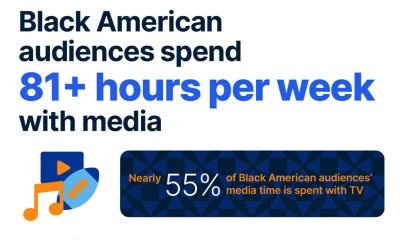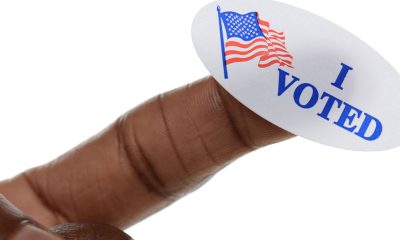Technology
AP Poll: No Lag on Tech Use by Black, Hispanic Millennials


GLYNN A. HILL, Associated Press
WASHINGTON (AP) — A new poll finds African-American and Hispanic millennials are just as technologically connected and likely to get news through social media as regularly as their white counterparts, further narrowing the risk of people of color being left behind technologically.
Overall, 57 percent of millennials say they get news and information from Facebook at least once a day, and 81 percent say they get it from Facebook at least once a week. The poll also found that Hispanics and African-Americans are just as likely as any millennials to have a paid news subscription.
There was little differentiation between racial groups getting news from Facebook, the poll found. But about half of African-American millennials said they comment on news stories posted to Facebook, compared to about 3 in 10 whites and Hispanics.
The findings suggest that, despite fears that millennials — those 18-34 years old — may not be going to traditional sources for news, they are clearly getting news from social media.
“People of color are very wired and just as adept in using technology,” said Tom Rosenstiel, executive director of the American Press Institute, which funded the study. “If you want a subject that hasn’t been covered in the mainstream, millennials have found ways to get at that information through community sharing more than traditional ways. The way they get news is heavily influenced by topic.”
In general, 64 percent of millennials say they read and watch news online regularly, including 66 percent of African-Americans, according to the poll, which was conducted by the Associated Press-NORC Center for Public Affairs Research and the American Press Institute. Sixty-five percent of white millennials say they keep up with the news online, while Hispanics were slightly less likely to say so, at 53 percent
In the 1990s, policymakers and advocacy groups expressed concern that minorities would have less access to technology than whites, a situation labeled the “digital divide.” Over time, however, minorities emerged among the biggest users of certain forms of technology, such as smartphones.
The AP-NORC study found no evidence to suggest that African-Americans’ and Hispanics’ use of technology lags behind whites, with nearly all millennials using a smartphone and half using a tablet.
African-Americans are also more likely to use Facebook for keeping up with what’s “trending” on social media — 41 percent of African-Americans compared with 29 percent of whites and 24 percent of Hispanics.
Those who are Hispanic or African-American are more likely than white millennials to get news and information from YouTube (38 percent of Hispanics compared with 33 percent of African Americans and 20 percent of whites) and Instagram (30 percent of Hispanics compared with 45 percent of African-Americans and 19 percent of whites).
According to Rosenstiel, YouTube’s popularity partially stems from users’ ability to produce content without gatekeepers.
“We see topics that aren’t mainstream finding a big audience — a lot of gamers, comedy, news commentary. As something goes mainstream, young people look for new channels to exercise some control,” he said.
Streaming music, TV or movies is the most commonly cited online activity among African-Americans, while keeping up with what their friends are doing is the most commonly cited online activity among Hispanics. For white millennials, checking and sending email was most common.
“What we’ve seen is millennials’ similarities are much greater than the differences people thought that there were going to be,” Rosenstiel said of the online experience. “We’ve created new common ground.”
___
The survey of 1,045 young adults, including 163 non-Hispanic African-Americans and 162 Hispanics, was conducted from Jan. 5 through Feb. 2, 2015. It was conducted by the Media Insight Project, a partnership between the AP-NORC Center and the American Press Institute, which funded the study.
The survey was conducted using online interviews in English and Spanish done with a random sample of adults age 18-34 who were initially recruited and screened to take part in the survey over the phone. Results from the full survey have a margin of sampling error of plus or minus 3.8 percentage points. The margin of error is higher for subgroups.
___
Online: http://www.mediainsight.org/
Copyright 2015 The Associated Press. All rights reserved. This material may not be published, broadcast, rewritten or redistributed.












































